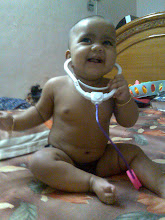In high capacity pulverized coal fired boilers, the total losses account to about 12 to 14%, i.e. 86 to 88% boiler efficiency. Roughly 50% of the losses can be tuned to the optimum and the other 50% is governed by fuel properties like hydrogen in fuel, moisture in fuel, and ambient air conditions.
Boiler efficiency is mainly depended on the amount of losses in the system. In high capacity pulverized coal fired boilers the total losses account to about 12 to 14%. Roughly 50% of the losses are governed by fuel properties like hydrogen in fuel, moisture in fuel and ambient air conditions. The other 50% losses are carbon loss and dry gas loss.
The best efficiency in the boiler can be achieved if the losses are kept to the minimum. Since 50% of the losses are dependent on the fuel and ambient condition, the best efficiency can be achieved by properly tuning the other 50%, i.e. mainly carbon loss and dry gas loss.
Carbon loss:
Carbon loss is due to unburned carbon in fly ash and bottom ash. Normally the unburned in bottom ash in the pulverised fuel firing are higher sized particle and of higher specific gravity having the unburned macerals like Fusinite embedded in mineral matter and the low melting constituents encapsulating the reactive maceral. Fly ash of pulverised coal firing system is around 80 to 90 percent of the total ash removed. The normal types of unburned are inert macerals, cenospheres, and carbonaceous clay.
Factors affecting carbon loss are:
• Coal rank and quality
• Coal Petrographic characteristics
• Characteristics and quantum of carbonaceous shale
• Presence of low melting inorganics in coal ash
• Residence time available for combustion in furnace
• Type and number of burners
• Type of milling system and primary air control system
• Fineness of pulverised coal - Percentage of coarser particles
• Primary air to secondary air ratios
• Excess air at the burner/furnace and distribution of air into the burner/furnace
• Burner Tilt (If provided).
The factors having the greatest influence on carbon loss are the boiler type, volatile matter content in the coal, furnace heat loading (heat input/furnace volume), mass fraction of pulverised coal smaller than 75 mm and excess air.
Dry gas loss:
The dry gas loss accounts to about 40% of total losses. Dry gas loss is due to the heat carried away by the flue gases leaving the boiler. Today many of the boiler designers reduce this loss by recovering the heat after low temperature superheater by larger economizer and air pre-heaters. As designers go for lower and lower exit gas temperature the size of air pre-heaters go up.
Boiler tuning for optimal Dry gas :
• Keep an optimal excess air level, generally about 20% in a coal fired boiler
• Tune combustion of coal to the optimal condition.
• Understand the coal being fired
• Proper distribution of combustion air at primary, secondary, and tertiary levels
• Keep the required fineness of coal about 75% through 200 mesh and less than 2% on 50 mesh sieve
• Keep the maximum mill outlet temperature to reduce air bypassing air pre-heater
• Soot blowing the entire heat transfer surface at an optimal frequency
• Minimize the air in leakage to the boiler
Dry gas loss is also influenced by the economizer feed water inlet temperature and the ambient air temperature, which change the heat recovery pattern of economiser & air-pre-heater.
Minor losses:
There are a few minor losses in boiler which can also be tuned are the mill reject loss and the carbon monoxide loss. The mill reject loss depends on the amount of pyrite in coal and the mill operating condition. The rejects by the mill do have a heat value which is accounted as mill reject loss. This can be minimized by properly maintaining the mill cleanaces and operating at the optimal condition. The carbon-monoxide loss is due to combustion not being fully completed. However small these losses are, the present environmental condition requires these losses also to be kept to the minimum.
Other losses like loss due to moisture in fuel, air moisture loss, loss due to hydrogen in fuel, etc also get affected by change in exit gas temperature, but the major impact on these losses is by fuel and ambient property. When dry gas loss and carbon loss are kept to the optimum level then the boiler is operated with its best efficiency.
